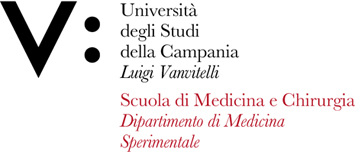Massimiliano MASULLO
Insegnamento di PRESTAZIONI FUNZIONALI E AMBIENTALI PER LA MODA
Corso di laurea magistrale in DESIGN PER L'INNOVAZIONE
SSD: ING-IND/11
CFU: 8,00
ORE PER UNITÀ DIDATTICA: 64,00
Periodo di Erogazione: Primo Quadrimestre
Italiano
| Lingua di insegnamento | Italiano con approfindimenti in inglese |
| Contenuti | L’insegnamento è strutturato tre diverse sezioni dove si sviluppano: Gli elementi di base della Fisica tecnica ambientale; il comfort del vestiario e l'applicazione la loro applicazione ad un caso reale. |
| Testi di riferimento | - Slides del docente |
| Obiettivi formativi | L'insegnamento intende fornire agli allievi gli strumenti per proporre, sviluppare e valutare comparativamente soluzioni progettuali finalizzate al raggiungimento della comfort del vestiario. |
| Prerequisiti | - |
| Metodologie didattiche | L’insegnamento è organizzato in lezioni teoriche di base e di approfondimento, implementazione di modelli di scambio termico a schemi reali, oltre che nello sviluppo, rappresentazione e valutazione di soluzioni progettuali migliorative di un abbigliamento specifico. |
| Metodi di valutazione | Lo studente svilupperà un progetto di un indumento per una specifiche categoria di utente e condizione di ambientale di utilizzo, elaborando soluzioni tecniche migliorative del comfort |
| Altre informazioni | - |
| Programma del corso | Aria umida e le sue proprietà. Pressione parziale. Legge di Dalton. Legge dei gas ideali. Saturazione dell’aria umida. Stato termodinamico dell’aria umida e sua identificazione. Parametri termometrici ed igrometrici. Il diagramma psicrometrico. Elementi di termodinamica. Sistema termodinamico ed Ambiente. Forme di energia. Calore e Lavoro. Potenza termica e meccanica. Sistema aperto e chiuso. Sistema adiabatico ed isolato. Proprietà estensive ed intensive. Sostanze pure. Fasi e loro trasformazioni. Bilancio di Energia. Bilancio di massa. |
English
| Teaching language | Italian with insights in English |
| Contents | The teaching is structured in three different sections where it develops: The basic elements of environmental technical physics; the comfort of clothing and their application to a real case. |
| Textbook and course materials | - Power point Slides |
| Course objectives | The course intends to provide students with the tools to propose, develop and comparatively evaluate design solutions aimed at achieving the comfort of clothing. |
| Prerequisites | - |
| Teaching methods | The teaching is organized in basic and in-depth theoretical lessons, implementation of heat exchange models in real schemes, as well as in the development, representation and evaluation of design solutions for the improvement of specific clothing. |
| Evaluation methods | The student will develop a garment project for a specific category of user and environmental condition of use, developing technical solutions to improve comfort |
| Other information | - |
| Course Syllabus | Humid air and its properties. Partial pressure. Dalton's law. Ideal gas law. Saturation of humid air. Thermodynamic state of humid air and its identification. Thermometric and hygrometric parameters. The psychrometric diagram. Elements of thermodynamics. Thermodynamic system and Environment. Forms of energy. Heat and Work. Thermal and mechanical power. Open and closed system. Adiabatic and isolated system. Extensive and intensive properties. pure substances. Phases and their transformations. Energy Balance. mass balance. |








